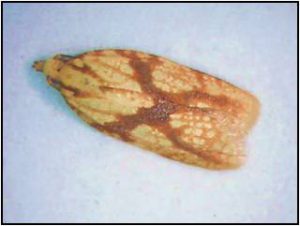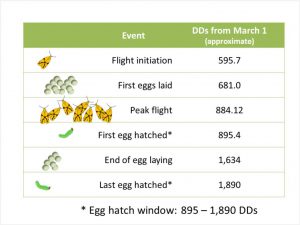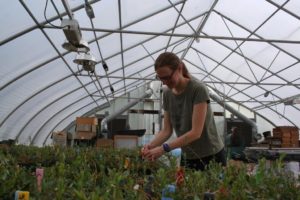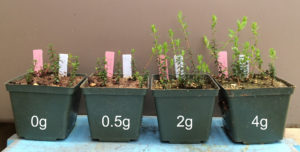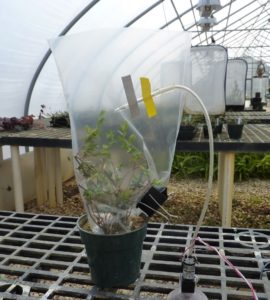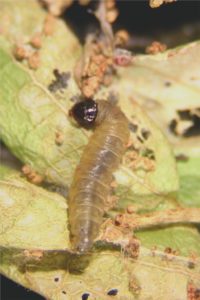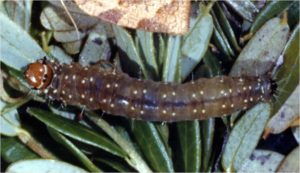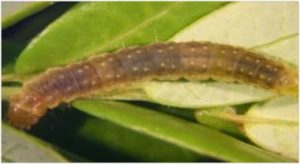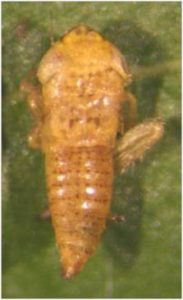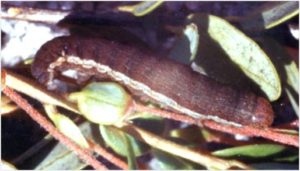Based on our degree-day (DD) model for Sparganothis fruitworm, peak flight and first eggs hatched events are expected at around 884 and
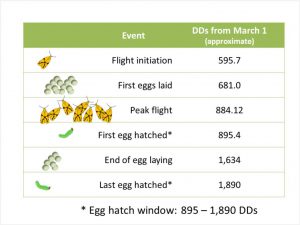
Sparganothis degree-day model benchmarks
895 DD, respectively (see chart). As of June 20, Sparganothis has accumulated 1022 DD (using March 1 as biofix) or 883 DD (using April 15 as biofix; a biofix more realistic to New Jersey practices). Based on the April 15 biofix, we are at peak flight activity and eggs should start hatching within the next few days. Larval injury to fruit usually begins after the eggs hatch. If treatment is required (based on pheromone trap counts), sprays should be applied two weeks after peak moth flight (i.e., 1st week in July) and/or earlier (i.e., next week) if populations are unusually high. When bees are present, your option is to use an insect growth regulator such as Intrepid. Our “standard” recommendation has been, however, to wait until bees are removed to apply an insecticide. Your post-bloom options include Diazinon, Altacor, Delegate, Exirel, or Intrepid. Timing of insecticide application is critical; so, if needed, do not wait longer than July 5 to manage this pest.
